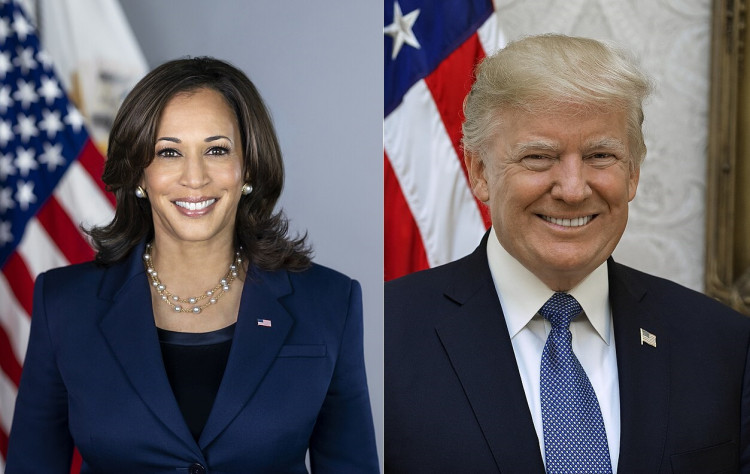In a dramatic shift in the 2024 presidential race, Vice President Kamala Harris has overtaken former President Donald Trump in a national poll, signaling a potential turning point as the election nears. The latest Reuters/Ipsos poll, published on Thursday, reveals Harris leading Trump by 45% to 41% among registered voters, a notable increase from her slim 1-point lead in late July. This four-point advantage highlights a significant shift in voter sentiment, driven by Harris's growing appeal and intensified campaign efforts.
The poll, conducted over eight days ending on Wednesday and featuring a 2-percentage-point margin of error, indicates that Harris has made notable gains among key demographic groups. She leads Trump by a commanding 13 percentage points among both women and Hispanic voters, a substantial improvement from her 9-point lead among women and 6-point lead among Hispanics in July. This surge in support underscores Harris's ability to galvanize enthusiasm among core Democratic constituencies.
Harris's newfound strength comes in the wake of President Joe Biden's withdrawal from the race on July 21, following a lackluster debate performance against Trump that led to widespread calls for him to step aside. Since Biden's departure, Harris has seen a boost in both national and battleground state polls, positioning her as a formidable contender in the race for the White House.
Despite these gains, the battle remains fiercely contested in key swing states, where Trump maintains a narrow lead. According to a separate survey by Emerson College Polling and The Hill, Trump is ahead of Harris in Arizona, North Carolina, and Wisconsin, with margins ranging from 1 to 3 percentage points. In contrast, Harris edges out Trump in Georgia, Michigan, and Nevada, with similarly close margins. The poll also shows a deadlock in Pennsylvania, with both candidates tied at 48% each.
Spencer Kimball, Executive Director of Emerson College Polling, noted that the race remains tight in these critical battlegrounds, with most numbers falling within the margin of error. "The race between Kamala Harris and Donald Trump continues to be tight, within each state's margin of error," Kimball said. This close competition highlights the importance of each state in determining the overall outcome of the election.
Harris's recent poll numbers reflect an energized Democratic base, with 73% of registered Democratic voters expressing increased excitement about voting in November following Harris's nomination. This is a marked contrast to earlier sentiments in March, where many Biden supporters indicated they were voting primarily to oppose Trump rather than to support Biden himself. Aimee Allison, founder of She the People, attributed this shift to Harris's appeal as a forward-looking candidate. "They see Kamala Harris as the future, and Republicans see this election as just about Trump," Allison commented.
On the other side of the aisle, Trump continues to enjoy strong support from his base. Sixty-four percent of Trump voters are motivated by backing the former president rather than opposing Harris. Despite Harris's edge on abortion policy, where she leads Trump 47% to 31%, Trump maintains a broader advantage on economic management, with 45% of voters favoring his approach compared to 36% for Harris.
The poll's timing, which coincided with the Democratic National Convention from August 19-22, may have contributed to Harris's rise in the polls. As she embarks on a tour of battleground states, her campaign seeks to capitalize on the momentum from the convention and solidify her position ahead of the November election.
In addition to the presidential race, the polling data reveals competitive Senate races in several key states. Democratic candidates lead their GOP rivals in Arizona, Michigan, Nevada, Pennsylvania, and Wisconsin, indicating a broader trend of Democratic strength down-ballot.






